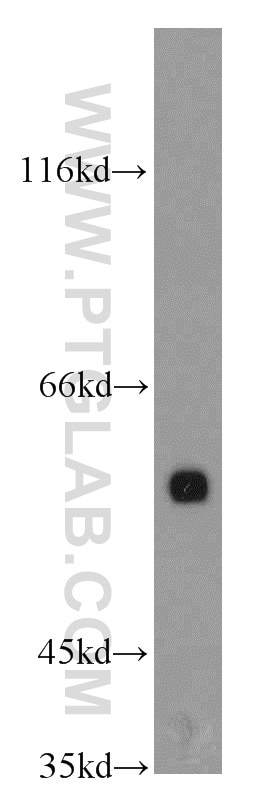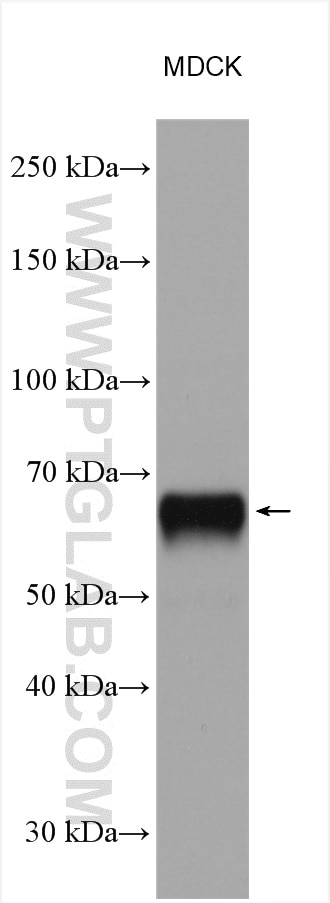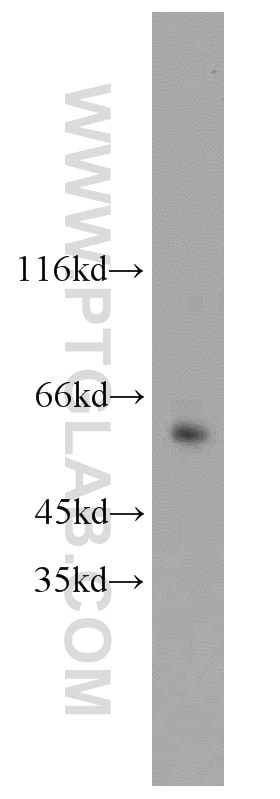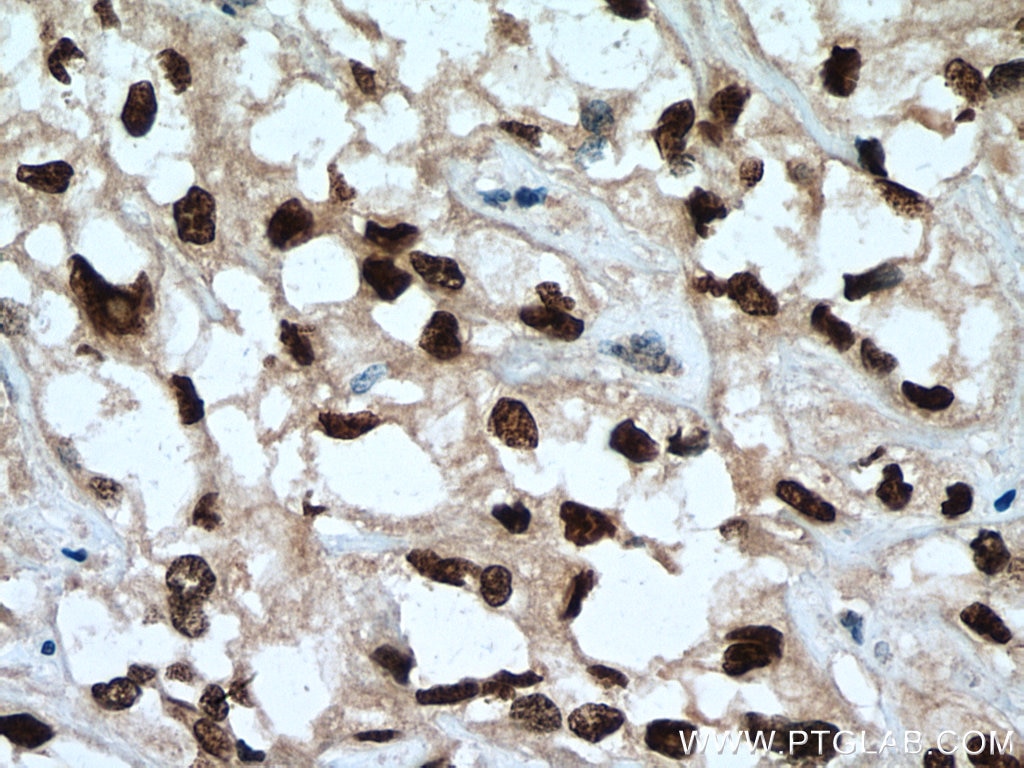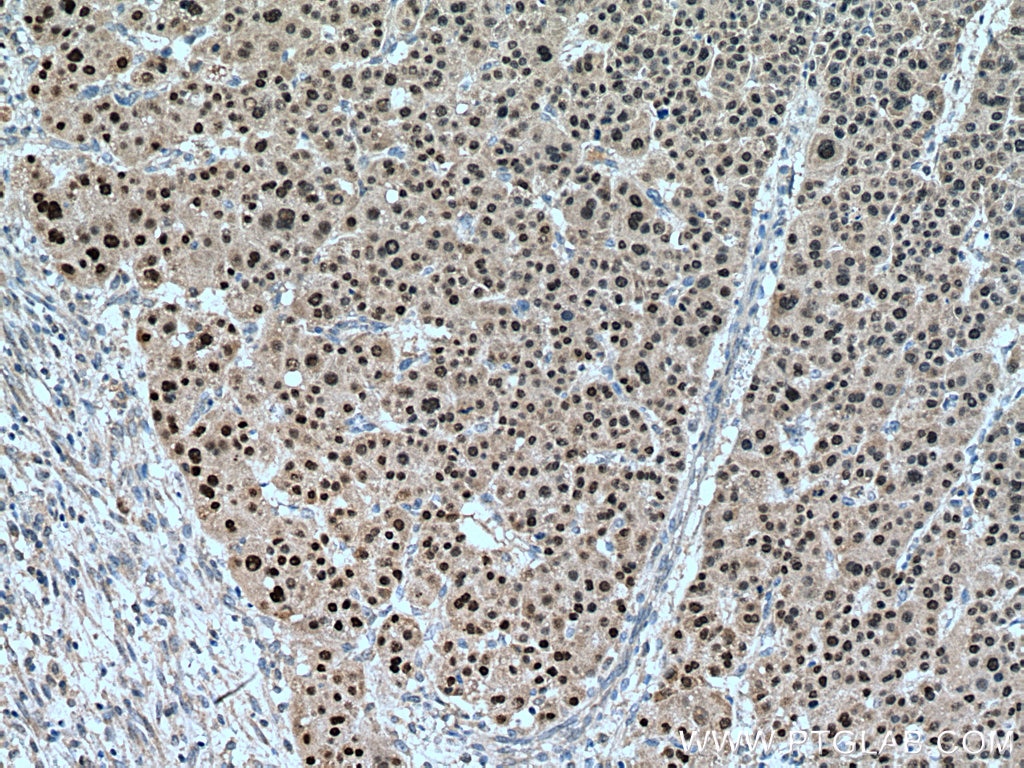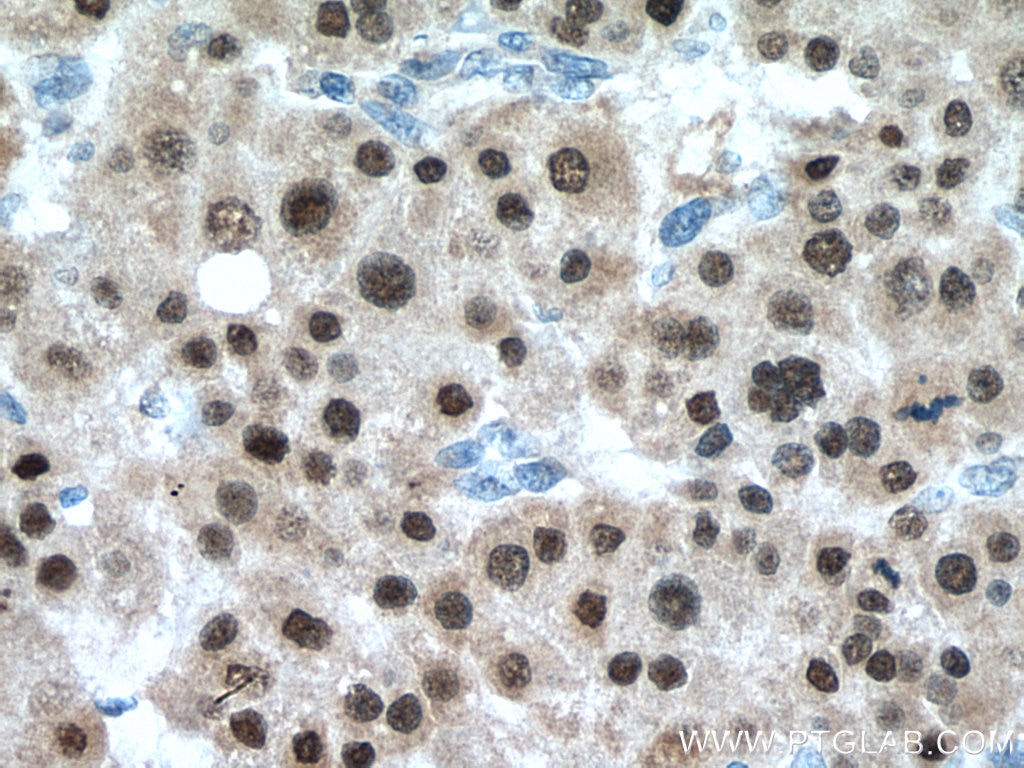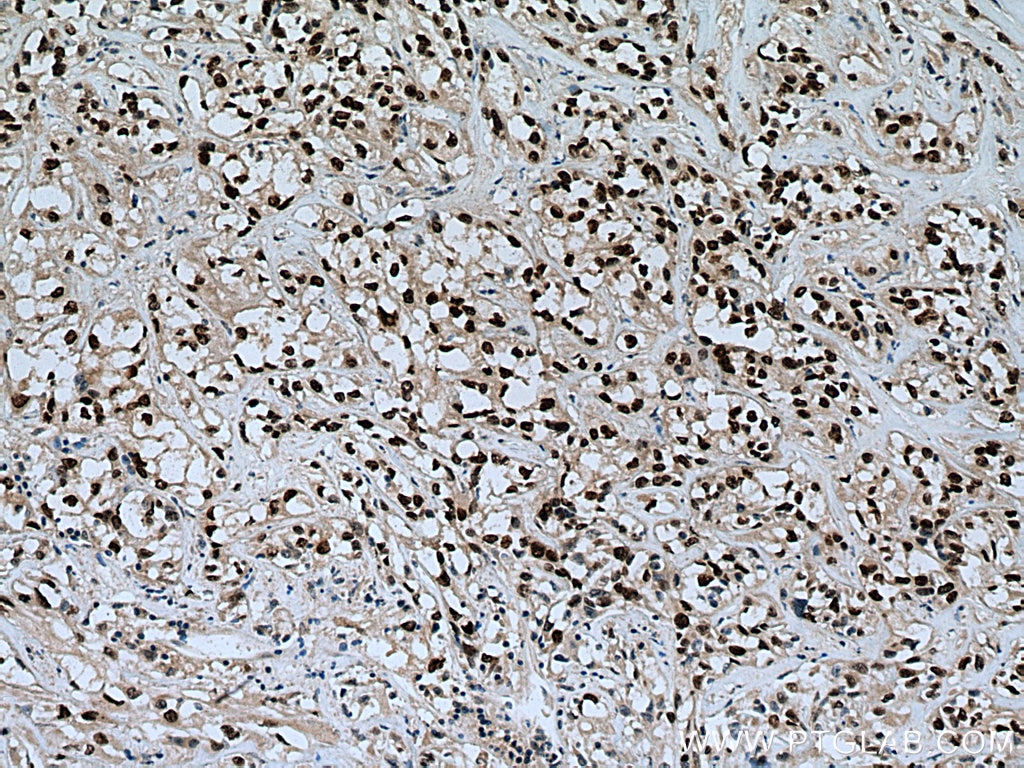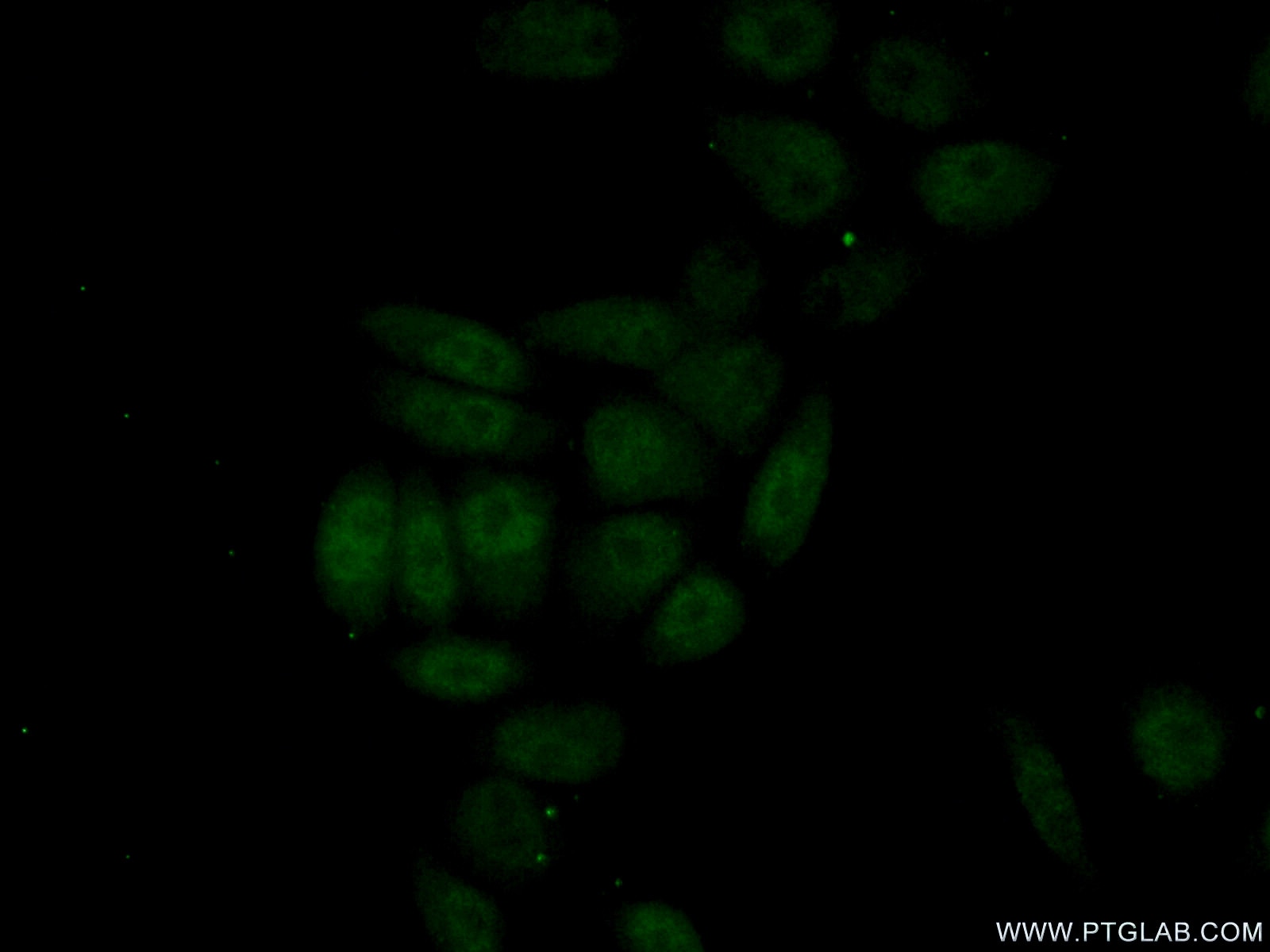Validation Data Gallery
Tested Applications
| Positive WB detected in | L02 cells, Jurkat cells, MDCK cells |
| Positive IHC detected in | human renal cell carcinoma tissue, human liver cancer tissue Note: suggested antigen retrieval with TE buffer pH 9.0; (*) Alternatively, antigen retrieval may be performed with citrate buffer pH 6.0 |
| Positive IF/ICC detected in | L02 cells |
Recommended dilution
| Application | Dilution |
|---|---|
| Western Blot (WB) | WB : 1:500-1:1000 |
| Immunohistochemistry (IHC) | IHC : 1:200-1:800 |
| Immunofluorescence (IF)/ICC | IF/ICC : 1:50-1:500 |
| It is recommended that this reagent should be titrated in each testing system to obtain optimal results. | |
| Sample-dependent, Check data in validation data gallery. | |
Published Applications
| KD/KO | See 3 publications below |
| WB | See 13 publications below |
| IHC | See 15 publications below |
| IF | See 4 publications below |
| FC | See 1 publications below |
| CoIP | See 1 publications below |
Product Information
12533-1-AP targets HNF1B in WB, IHC, IF/ICC, CoIP, ELISA applications and shows reactivity with human, mouse, rat, canine samples.
| Tested Reactivity | human, mouse, rat, canine |
| Cited Reactivity | human, mouse, pig |
| Host / Isotype | Rabbit / IgG |
| Class | Polyclonal |
| Type | Antibody |
| Immunogen |
CatNo: Ag3232 Product name: Recombinant human HNF1B protein Source: e coli.-derived, PGEX-4T Tag: GST Domain: 1-310 aa of BC017714 Sequence: MVSKLTSLQQELLSALLSSGVTKEVLVQALEELLPSPNFGVKLETLPLSPGSGAEPDTKPVFHTLTNGHAKGRLSGDEGSEDGDDYDTPPILKELQALNTEEAAEQRAEVDRMLSEDPWRAAKMIKGYMQQHNIPQREVVDVTGLNQSHLSQHLNKGTPMKTQKRAALYTWYVRKQREILRQFNQTVQSSGNMTDKSSQDQLLFLFPEFSQQSHGPGQSDDACSEPTNKKMRRNRFKWGPASQQILYQAYDRQKNPSKEEREALVEECNRAECLQRGVSPSKAHGLGSNLVTEVRVYNWFANRRKEEAFR 相同性解析による交差性が予測される生物種 |
| Full Name | HNF1 homeobox B |
| Calculated molecular weight | 557 aa, 61 kDa |
| Observed molecular weight | 58-65 kDa |
| GenBank accession number | BC017714 |
| Gene Symbol | HNF1B |
| Gene ID (NCBI) | 6928 |
| RRID | AB_2116758 |
| Conjugate | Unconjugated |
| Form | |
| Form | Liquid |
| Purification Method | Antigen affinity purification |
| UNIPROT ID | P35680 |
| Storage Buffer | PBS with 0.02% sodium azide and 50% glycerol{{ptg:BufferTemp}}7.3 |
| Storage Conditions | Store at -20°C. Stable for one year after shipment. Aliquoting is unnecessary for -20oC storage. |
Background Information
Hepatocyte nuclear factor-1-beta(HNF1B), or transcription factor-2(TCF2), is a member of the homeodomain-containing superfamily of transcription factors. Early expression of HNF1B(12533-1-AP) is seen in the kidney, liver, pancreas, thymus, lung, gut and genital tract. HNF1B can be a homodimer or a heterodimer with HNF1A. It's a transcription factor, probably by binding to the inverted palindrome 5'-GTTAATNATTAAC-3', and as a bookmarking factor that marks target genes for rapid transcriptional reactivation after mitosis. This is a rabbit polyclonal antibody raised against part chain of N-terminus of human HNF1B. HNF1B exists some isoforms with MV 61 kDa, 58 kDa, 46 kDa and 44 kDa.
Protocols
| Product Specific Protocols | |
|---|---|
| IF protocol for HNF1B antibody 12533-1-AP | Download protocol |
| IHC protocol for HNF1B antibody 12533-1-AP | Download protocol |
| WB protocol for HNF1B antibody 12533-1-AP | Download protocol |
| Standard Protocols | |
|---|---|
| Click here to view our Standard Protocols |
Publications
| Species | Application | Title |
|---|---|---|
Elife Human embryonic lung epithelial tips are multipotent progenitors that can be expanded in vitro as long-term self-renewing organoids. | ||
Oncogene HNF1B-mediated repression of SLUG is suppressed by EZH2 in aggressive prostate cancer.
| ||
Development Prox1 ablation in hepatic progenitors causes defective hepatocyte specification and increases biliary cell commitment. | ||
Sci Rep Complex bile duct network formation within liver decellularized extracellular matrix hydrogels. | ||
J Cell Mol Med HNF1B inhibits cell proliferation via repression of SMAD6 expression in prostate cancer. | ||
Sci Rep ATM-deficiency increases genomic instability and metastatic potential in a mouse model of pancreatic cancer. |

